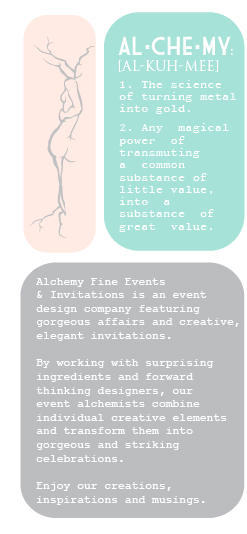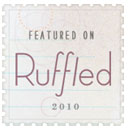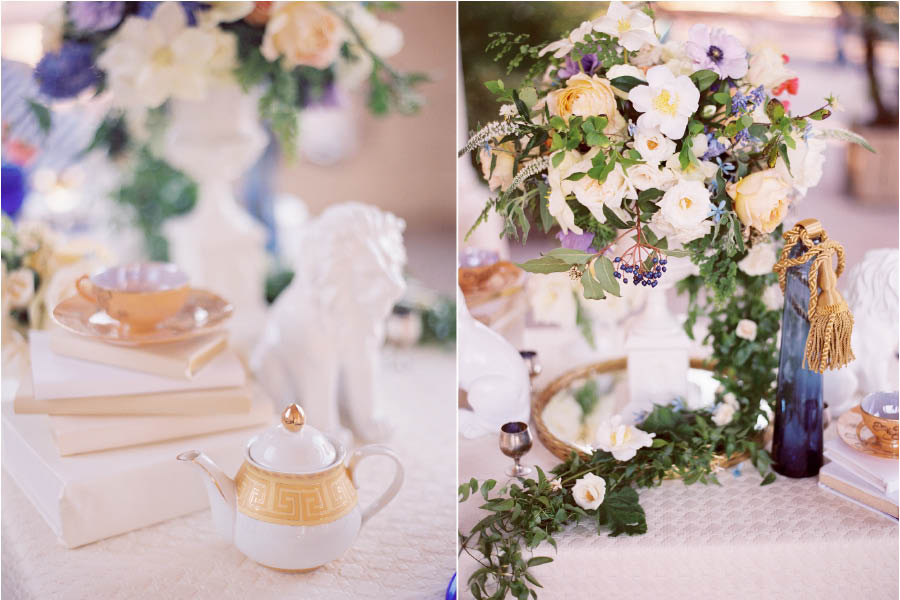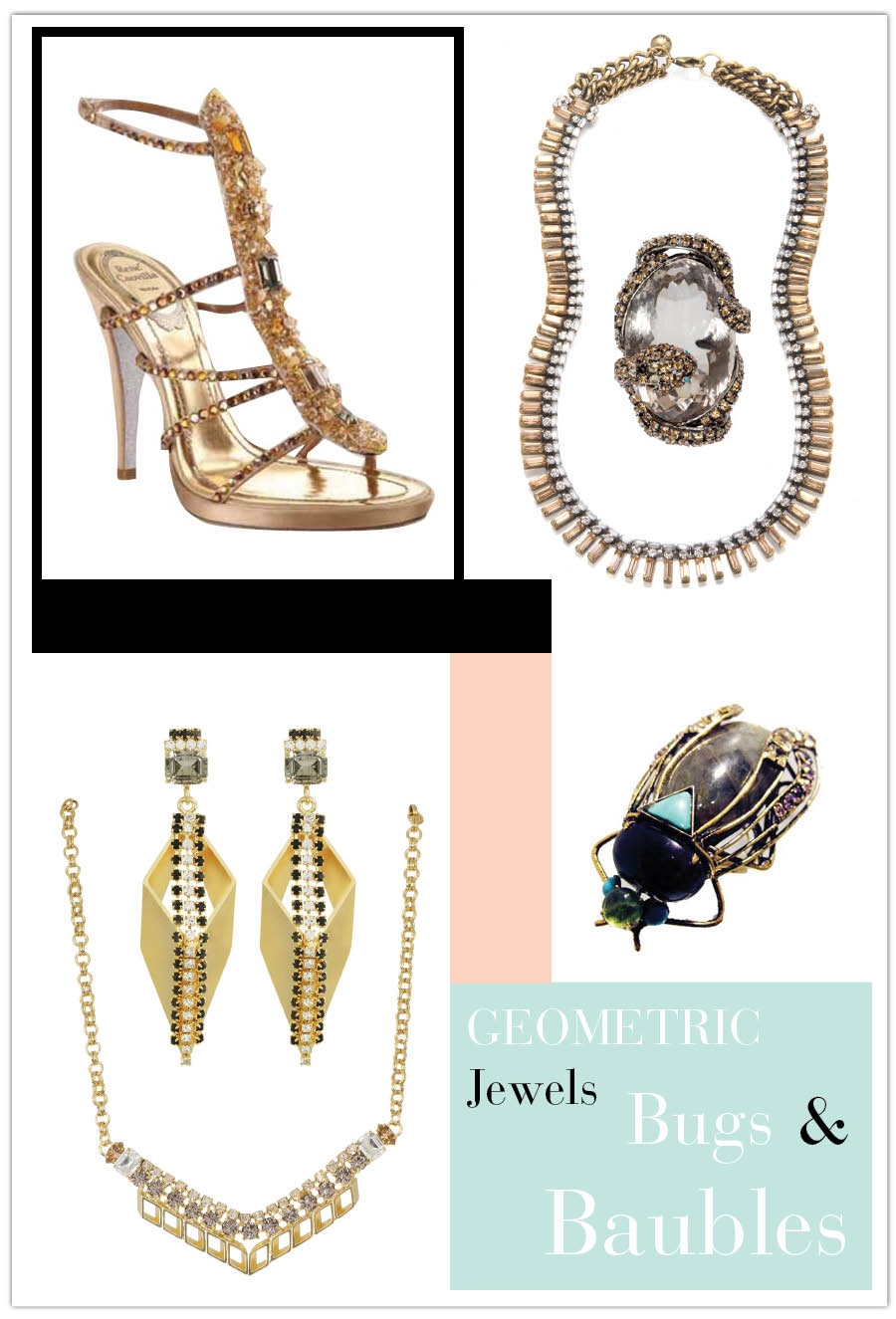Art History for Brides: Greco Roman Periwinkle, Blue and White Wedding

When it comes to great design and great style, one can’t help but to look back at the floor plans of design laid out before us by the great genres of our times for inspiration. But too often then not, people, brides in particular, confuse their style references when trying to explain their dream wedding. This was the theory behind the Art History for Brides series we’re featuring exclusively on Style Unveiled, an amazing and stylish resource for brides and grooms nationwide. Not only to educate on the art history of our past but to inspire brides to bring classical designs into the modern day worlds with a few twists and tweaks! Last month we brought you the first installment with our Egyptian series. Now onto the 2nd installment captured by the ever amazing Jill Thomas…
When in Rome, do as the Romans do…. Especially when it comes to a Periwinkle, Cobalt Blue and White Wedding.
As the world was evolving so did the scholarly aspects of the Greeks and the Romans during ancient times. The Greeks founded the Olympics, democracy and a form of mathematics. The Romans invented paved roads, in-house plumbing and arches. Fantastic architectural styles were born including the fluted columns, ornate capitals and monumental erections to worship the gods from.
Mythology also played a huge part in the lives of both the Greeks and the Romans, as this was not only their religion but basis of law as well. Most everything evolved around their love, respect and worship of the Gods above, including not angering Aphrodite, the goddess of love.
With the ancient Greeks and Romans in mind we wanted to design a setting that was reminiscent of an ancient wedding complete with their love of philosophy, architecture, beauty, the Gods, the sea, and of course, love itself.
Greek mathematics served as inspiration for an abacus inspired seating chart with gold beads and natural semi-precious stones such as turquoise, blue lapis and purple amethyst.
Geometric textured linens of cream and white served as the palette for this Greco Roman tablescape featuring bold gold and cobalt blue china and stemware. Periwinkle and gold leaf tea cups and saucers were stacked upon white linen covered books as the mythological lions stood guard on the table and on the plates.
The lush centerpiece arrangements by Isari Flower Studio consist of romantic trailing smilax vine, blush spray roses, white anemones, creamy Caramel Antique Garden roses, camellias, veronicas, viburnum berries, blue muscari and tweedia to name a few.
For a different take on the classic table numbers we used golden Roman numerals to display the table number.
The Greek Key pattern (also known as a meander or Greek fret) is representative of the Büyük Menderes River, which is a twisting river mentioned in Homer’s The Iliad. The meandering pattern, along with spiral scrolls and circle patterns, is common in ancient Grecian fashion and architecture. Typically these patterns are seen in gold to represent royalty and honor to the Gods. We featured a greek key trim on top of the place settings and also on a vintage tea pot for bold bursts of gold.
Geometric textured linens of cream and white served as the palette for this Greco Roman tablescape featuring bold gold and cobalt blue china and stemware. Periwinkle and gold leaf tea cups and saucers were stacked upon white linen covered books as the mythological lions stood guard on the table and on the plates.
Periwinkle striped pillows were stacked onto the ornate white chairs and golden satin tassels crowned the bride’s and groom’s thrown.
Erica O’Brien blew us away yet again with her three tiered cake designed with a Greek key, columns, gold acanthus leaves and sugar sea glass.
We wanted to create the feeling of long lost treasures and relics that have been hiding in an overgrown and forgotten ancient city.
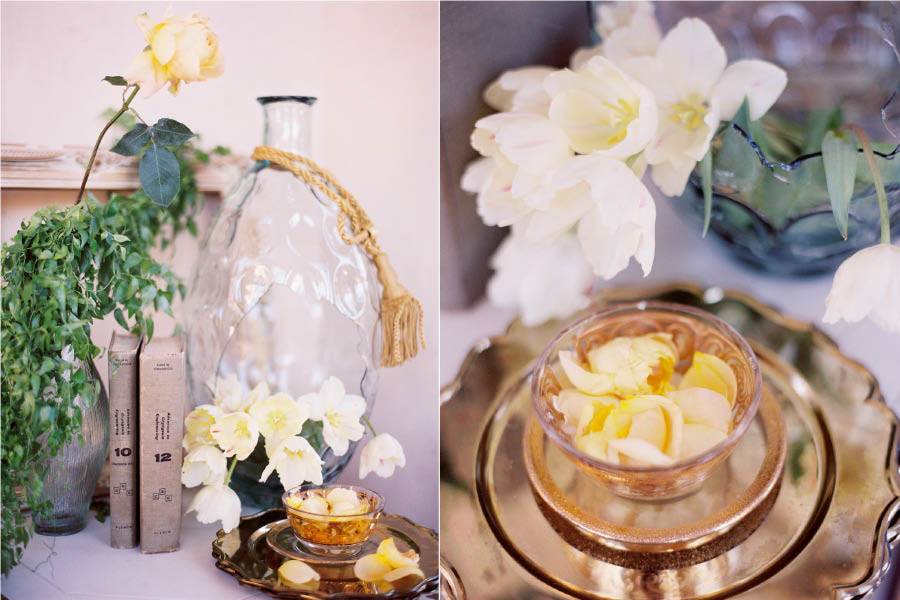 For a delicate take on a dessert bar we featured pastel pastries and confections by Opera Patisserie atop a setting of marble, china, books and green glassware for a feeling of being set amongst ancient relics of the past.
For a delicate take on a dessert bar we featured pastel pastries and confections by Opera Patisserie atop a setting of marble, china, books and green glassware for a feeling of being set amongst ancient relics of the past.
As for the wedding itself, the ancient Greek wedding ceremony usually lasted three days and consisted of preparing the bride at her fathers house for her move into her new home. The bride and groom would then feast along with their families and make offerings to the Gods, usually childhood toys and clothing, representing the end of adolescence. Sacrifices to Artemis, goddess of virginity, would include locks of hair in hopes of an easy passage from virginity. The couple would both make offerings to Aphrodite for a fruitful life full of lots of children. On the actual wedding day the bride would be tended to by women and young children and treated to a fresh spring water bath and then adorned with fragrant oils, flowers and most importantly the veil. The feasts would begin again and last well into the evening when upon waited anticipation, the veil would be removed and the procession to their new home would begin.
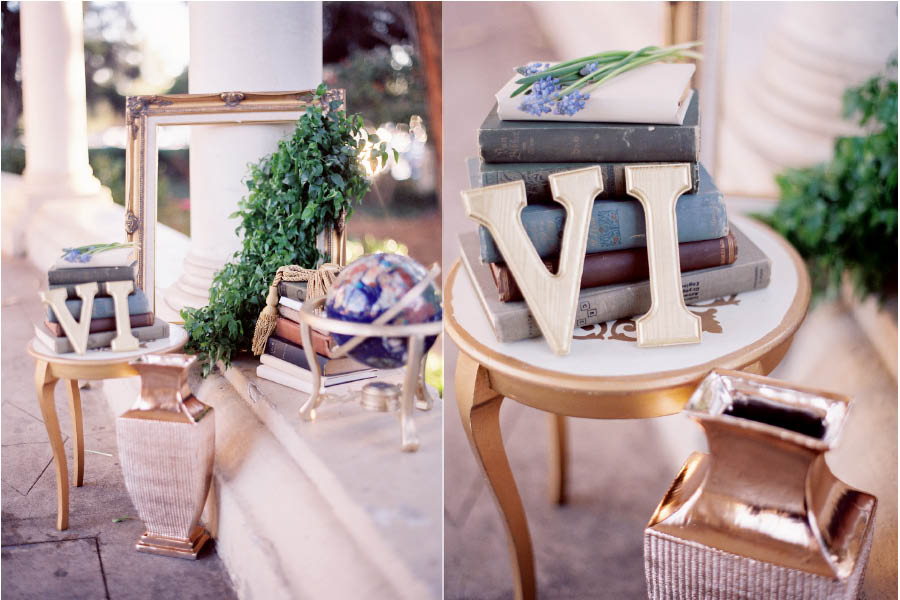 Whether you are inspired to create an mythological worthy fete or even just take some romantic inspiration from the offerings made to Aphrodite, we hope that our Greco Roman inspired gold, blue and white wedding will help to inspire romance for your wedding day in epic proportions.
Whether you are inspired to create an mythological worthy fete or even just take some romantic inspiration from the offerings made to Aphrodite, we hope that our Greco Roman inspired gold, blue and white wedding will help to inspire romance for your wedding day in epic proportions.
Event Design, Coordination & Invitation design by Alchemy Fine Events & Invitations
Flowers by Isari Flower Studio
Photography by Jill Thomas
Props by OC Prop Girl
Cake by Erica O’Brien
Dress by Allyson Simone Provence Bride
Bride & Groom styling by Stylish Silhouette & Alchemy Fine Events & Invitations
Jewelry by Rachel Leigh
Hair & Make up by Katwalk Styling
Pastries provided by Opera Patisserie

Read More »
Inspiration: Art History for Brides Greco Roman Inspiration Board
As the ancient times evolved so did the Greeks & the Romans with their quest for knowledge, democracy, and beautiful ornate architecture and decor. This was our inspiration for the 2nd installment of our Art History for Brides series for Style Unveiled. We were so excited for this installment! With my huge obsession with architecture and their awe inspiring level of ornate detail, this era in civilization created so many forms of beauty out of marble and stone that would be seemingly impossible at those times. This combined with their love and respect for the Gods, including Aphrodite, made for an epically romantic era.
We wanted to showcase the level of design and scholastic growth made by this era by focusing on bold designs, beautiful artisanal works and books with the classic words of the fabled tales of the Gods.
I love the combination of white and rich creamy vanilla, so many people feel the need to chose one or another as a palette base to start off but they compliment each other so beautifully! I also wanted to bring in soft periwinkle, rich cobalt blue and cool sea glass to off set the bright plaster whites.
Make sure to check out Style Unveiled’s blog for the full Greco Roman post coming later this week!
Props featuring in these inspiration boards by OC Propgirl
Read More »Art History for Brides: Egyptian Wedding Fashion
Egyptian Wedding Fashion…. to walk down the aisle in Egyptian style.
Today is the last, but definitely not least, installment in our Art History for Brides’s Egyptian series that is being featured on Style Unveiled. Bringing in elements of these opulent fashions and designs would definitely make for a bold style statement for your wedding day fashions.
Egyptian fashion usually consisted of a papyrus fabric sheath in white or dyed in jewel tones and featured ornately decorated collars of jewels, golds, feathers and beads. We suggest a style as stunning as the last dress designed by Alexander McQueen with champagne silk, silvered feathers and jewels.
Dress by Alexander Mc Queen, top right necklace by Kenneth J Lane, bottom left necklace by Claire Deve, bottom right necklace by Iradj Moini
If you don’t have an ornate neckline fake it with a gorgeous jeweled bib necklace on top of a simple strapless or one-shouldered sheath. You can also bring an Egyptian flare into your wedding day fashion with jeweled gold sandals such as these by Rene Caovilla. Don’t forget to bring in their high praise of animals with gorgeous baubles such as this scarab ring (scarabs were highly prized symbols in Egypt!) or a classic Bvlgari snake cuff.
Shoes by Rene Caovilla, Scarab ring by Iraj Moini, bottom left necklace and earrings by Rachel Leigh
Get Cleopatra’s regal style as shown by Elizabeth Taylor. Just tone down the makeup for your romantic and softer wedding day version.
Whether you exude the presence of Cleopatra dripping adorned with jewels or infuse elements of their style into your tablscape décor, the ancient Egyptian’s definitely provide wedding worthy inspiration we could all take a note from.
Greco Roman is next on the list for 2nd installment in the Art History for Brides series so make sure to look out for it coming soon on Style Unveiled!
Read More »Art History for Brides: Egyptian Wedding Invitation
A Cleopatra worthy Egyptian Wedding Invitation
Today we’ll be posting part 2 of our Egyptian Art History for Brides series. For this ancient art genre we created an ultra luxurious Egyptian wedding invitation featuring pyramid inspired stepped shapes, rich black and opulent gold. Egyptian style was highly revered by the Art Nouveau genre which was also infused into this custom design.
This trifold designed invitation features a pyramid cut closure with a gold lotus flower design and is tied up with an attached silk gold ribbon .
Stylized lotus flowers form a delicate frame around custom designed fonts and romantic script.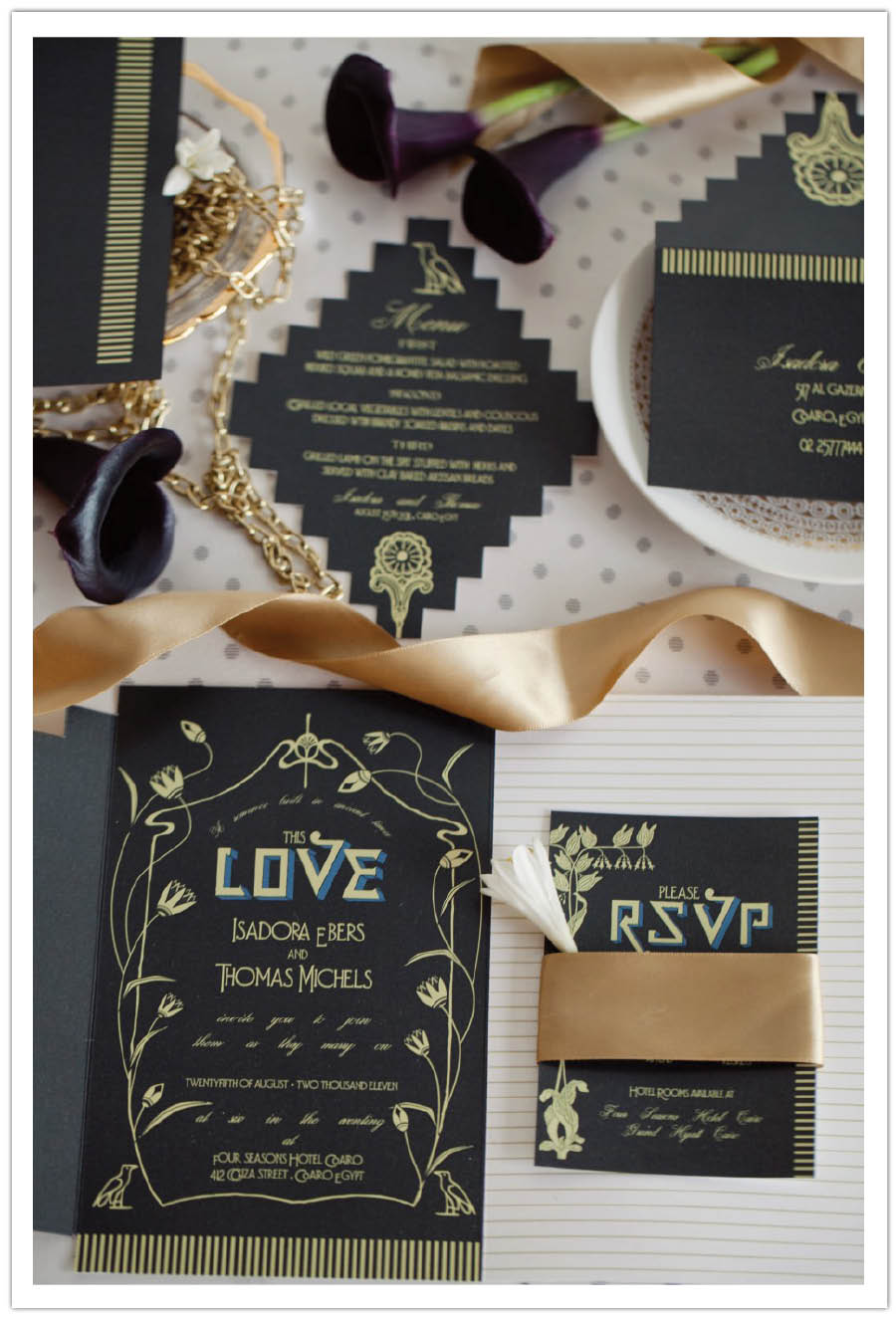
A gold ribbon holds the RSVP in place and on display inside of the invitation.
Don’t miss part 3 of our Egyptian series coming next with Cleopatra worthy style tips.
Photography by Katie Neal
Read More »



